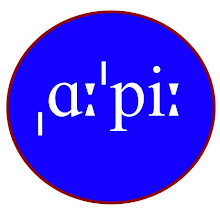Now that it seems unlikely that I can have another chance to live in England, at least in the near future, I always find It of utmost importance to practice the pronunciation of English whenever time allows me to. I make it a rule to read “aloud” everything written in English — sometimes even academic articles on phonetics — not only to keep the muscles of my speech organs fit for the articulation of English vowels and consonants, but also to retain my acquired British accent and keep it “undamaged”. I do not intend to insistently stick to RP, which I was taught during my three-year postgraduate study in phonetics at UCL, yet I always want to be able to demonstrate it whenever I teach my students English pronunciation.
For pronunciation training, I sometimes choose a native speaker’s fast speech as a model. As a very good model — although a bit old-fashioned — is Rex Harrison’s fast speech as Professor Higgins in My Fair Lady. On his first encounter with Eliza Doolittle on a rainy evening in Covent Garden, Higgins avowedly accuses her of her Cockney accent by saying:
“A woman who utters such disgusting and depressing noises has no right to be anywhere — no right to live. Remember that you are a human being with a soul and the divine gift of articulate speech; that your native language is the language of Shakespeare and Milton and the Bible; and don’t sit there crooning like a bilious pigeon.”
The lines are a great model for pronunciation training, since they are full of weak forms and linking, spoken rapidly with emphatic intonation. There is also a very good example of nasal release: ‘Milton and the Bible’ (/ˈmɪltn ən ðə ˈbaɪbl/). You can see Rex Harrison’s version here. In the phrase ‘a woman who utters’, ‘who’ is pronounced in its weakest form /ʊ/, linked with the /n/ of ‘woman’: /ə ˈwʊmən ʊ ˈʌtəz/.
This is really challenging for foreign learners of English, isn’t it?
Now, my version goes like this:↓
Well, how is it?
On the other hand, I try to make my accent as American as I can when I sing the songs of my all-time hero, Elvis Presley! Of course, yes!
Here is just a bit of my singing “See See Rider”:↓
The complete version of this number is here.
